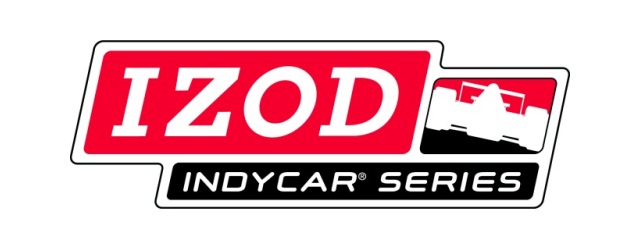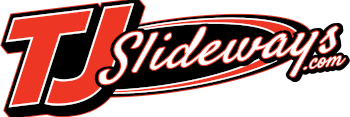
By Amy Konrath
Today’s IZOD IndyCar Series, Firestone Indy Lights and Mazda Road to Indy headlines:
1. INDYCAR name change officially announced
2. IZOD IndyCar Series announces 2012 engine displacement change
3. 2011 IZOD IndyCar Series competition rules changes unveiled
4. Minors to gain access to INDYCAR garage area
Note: A full transcript of today’s State of INDYCAR will be posted to www.indycar.com/media.
1. INDYCAR name change officially announced: The sanctioning body of the IZOD IndyCar Series, Firestone Indy Lights and Mazda Road to Indy will now be known as INDYCAR.
“As I was talking to fans and press through the course of last season, it was apparent that we needed to make a name change to reflect the history and heritage of our sport,” said Randy Bernard, CEO, INDYCAR. “The time has come for our sport to move forward under a name that truly signifies a unified organization. The INDYCAR name has worldwide recognition and aligns with our positioning as the fastest, most versatile racing and drivers in the world.”
A new sanctioning body logo to coincide with the name change was unveiled today during the State of INDYCAR presentation in Indianapolis.
All series names sanctioned by INDYCAR will remain the same as listed below:
· INDYCAR – The sanctioning body of the IZOD IndyCar Series, Firestone Indy Lights and Mazda Road to Indy.
· IZOD IndyCar Series – The top level of open-wheel racing in North America and the fastest, most versatile racing series in the world.
· Firestone Indy Lights – The developmental series for drivers and teams looking to reach the IZOD IndyCar Series.
· Mazda Road to Indy – The official ladder system that produces a defined road map for drivers looking to reach the pinnacle of open-wheel racing in North America through Cooper Tires presents US F2000 National Championship powered by Mazda, the Star Mazda Championship presented by Goodyear and Firestone Indy Lights.
Editor’s Note: The new INDYCAR logo is available for download at www.indycar.com/media.
2. IZOD IndyCar Series announces 2012 engine displacement change: The IZOD IndyCar Series announced today that it will reduce specifications for all 2012 engines from 2.4 to 2.2-liter.
“One of our goals with the new engine was to challenge the automotive industry to balance power, efficiency and durability,” said Brian Barnhart, president of competition and operations, IZOD IndyCar Series. “As we’ve progressed defining our engine rules with the INDYCAR Engine Committee, we felt it necessary to reduce displacement to a maximum of 2.2 liter to be in line with our smaller, lighter and more efficient direction.”
The INDYCAR Engine Committee is a working group made up of representatives from participating engine manufacturers, under the chairmanship of INDYCAR. This group meets several times a year to discuss manufacturer goals and emerging technologies while developing a roadmap for the future.
Honda, Chevrolet and Lotus have committed to building engines for the next generation IZOD IndyCar Series car in 2012 and are represented on the INDYCAR Engine Committee.
The 2012 platform allows manufacturers to produce engines with a maximum of six cylinders. The engines will be turbo charged producing between 550 and 700 horsepower to suit the diverse set of tracks on which the IZOD IndyCar Series competes. All engines will run on E85 with additional details on the fuel platform to be announced at a later date.
3. 2011 IZOD IndyCar Series competition rules changes unveiled: Double-wide restarts on ovals and the restart area moving closer to the start/finish line were among the 2011 rules alterations announced today by IZOD IndyCar Series president of competition and racing operations Brian Barnhart.
On-track changes incorporated in the rulebook followed input from team owners and drivers, along with communication with fans.
“We’re trying to increase the excitement and drama around the events,” Barnhart said. “Much of it is a response to fans’ expectations.”
Double-wide restarts will begin with the Indianapolis 500 on May 29 – the first oval race of the season. The race director will instruct drivers to line up according to running order on the final caution lap, with the race leader taking the inside position of Row 1.
The rule won’t be applied to road and street events because of their physical characteristics (narrow and quick corners that don’t allow for cars side by side) plus the build-up of tire tread “marbles” off-line as the race proceeds, though INDYCAR officials will monitor the racing at each venue to potentially integrate it for future seasons.
“At venues such as Barber, you have a right-hander and left-hander coming up on the start/finish line,” Barnhart said. “You don’t have time to get two wide. It’s easier to do that coming for the initial start because guys are willing to run off-line because the track is clean. They won’t do that an hour into the race.”
When the field hears “green next time by,” the restart zone will be closer to the start/finish line and be identified according to each venue’s characteristics. On ovals, the restart area had been between Turns 3 and 4.
“It’s a fan’s expectation that it’s where the restart should take place. It should be an exciting change,” Barnhart said.
Other changes include:
• Pit order for the field will be based on the qualifying performance from the previous similar venue instead of based on entrant points standings. An example: The starting order from the St. Petersburg race will determine the pit box location for the Honda Indy Grand Prix of Alabama at Barber Motorsports Park.
“We were looking for ways to reward drivers for their efforts in qualifying,” said Barnhart, who noted that pit order for the first race hasn’t been decided. “By changing the pit selection process, it provides some variety so it’s not always the same teams and drivers at pit out, which can be an advantageous pit location. I think it will be really good to mix things up a bit.”
• The pit commit line is moving to avoid drivers being caught in “no-man’s land.”
“Pit lane is technically defined by where the speed limit begins and ends,” Barnhart said. “Everything else is racetrack. At a track like Homestead, where the pit entrance is off the backstretch onto the deceleration lane in Turn 3, you could find yourself on that decel lane heading to pit lane and if it went caution you could not stop because you’re not within the pit boundaries – the speed limit zone.
“Now, if you make the decision to leave the racing surface and head to a pit box and a caution comes out while you are within that extended zone you will be able to stop.”
A marker, such as a cone, will identify the start of the zone.
• The first session of a race weekend will be 75 minutes, with rookies and cars outside the top 10 on the track for the initial 45 minutes followed by all cars for the duration. As a complementary rule change, an extra set of tires will be made available to those participating in the 45-minute session. At the conclusion of the 75 minutes, the top 10 cars will have to turn in one set and the other cars will have to turn in at least one, if not two if they chose to get the second set (teams will be charged for the second set).
• One set of tires will be allowed for each segment of road and street course qualifying (a maximum of three sets for the first, second and Firestone Fast Six sessions). “It’s their choice whether they use reds or blacks in any of the three segments, but whatever set they bolt on and start the segment with that’s the only set they can use,” Barnhart said.
4. Minors gain access to INDYCAR garage area: Fans as young at 9 years old will be able to get behind the scenes at IZOD IndyCar Series and Firestone Indy Lights events beginning in 2011.
INDYCAR is working with each of its racetrack partners to allow minors to hold garage passes during event weekends for the opportunity to see the stars and preparation of cars up close.
Venues will set their individual policy based on insurance and state-specific regulations.
For the first time in its 102-year history, the Indianapolis Motor Speedway will allow the purchase of garage passes for children 9 or older, or fourth grade and higher. Previously, minors were only allowed in the garage area on Community Day, a non-competition day.
“Our current fan base became fans of our sport by attending races with their parents, and we want to keep that tradition alive with the next generation,” said Randy Bernard, CEO, INDYCAR. “One of the greatest assets we have in enhancing the fan experience at the racetrack is access to our garage. We want our fans to get close to the action and excitement that defines the IZOD IndyCar Series. We are trying to make our events more family-friendly and allowing minor access to the garage is a great way to accomplish this. We thank the tracks for working with us to make this happen, and we look forward to creating unique programming in the garage that will further enhance the experience at each event.”

